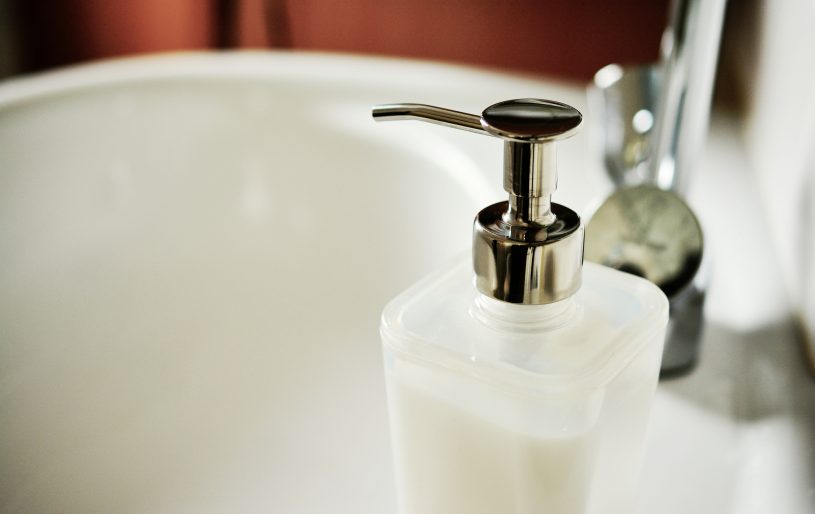As the COVID-19 crisis continues with new strains emerging, businesses and governments are adjusting their washroom hygiene strategies for dealing with the pandemic.
For example, Germany has instituted a new Occupational Health and Safety Rule that requires disposable paper or textile towels to be available in public washrooms. It also discourages the use of warm air dryers for hand drying due to concerns around the spread of COVID-19. Some multinational companies have taken a similar step, pledging to remove air dryers and use only paper towels in washrooms moving forward.
Hand hygiene remains of critical importance for organizations to thrive in the new climate created by COVID-19. This is one of two major lessons facilities can take away from the pandemic. The other is that a new and higher expectation of overall cleanliness exists among employees and guests, regardless of facility type.
Two Key Lessons for a New Age
To move a facility into the post-pandemic world with confidence, it will be important to understand the following lessons:
Hand hygiene remains paramount
Long understood as the easiest way to slow the spread of respiratory pathogens like influenza, widespread hand hygiene can be a powerful asset in keeping employees and facility occupants healthy. The pandemic placed hand and washroom hygiene in a brighter spotlight, which isn’t likely to fade when COVID-19 cases diminish.
In fact, 90 per cent of Americans say they are handwashing more frequently, thoroughly, or for longer during the pandemic, and 88 per cent claim they will continue following handwashing best practices even after the pandemic. According to the World Health Organization, the handwashing process should take about as long as singing “Happy Birthday” twice, including rubbing hands together vigorously, and individuals should use a paper towel to dry hands.
As vaccinations continue, and some people feel more confident visiting indoor environments, facilities must continue to promote proper handwashing and hand-drying and make these processes easy to execute. A 2017 Harris Poll found that 69% of Americans prefer using paper towels over air dryers in public washrooms. While the United States has yet to implement a rule similar to Germany’s, businesses can follow best practices by stocking paper towels in washrooms even if there are air dryers.
Innovative solutions can help enhance washroom hygiene
In addition to providing paper towels in washrooms, businesses such as hotels and restaurants may also consider additional hygienic solutions. Door tissue dispensers placed near exits and major touchpoints can help reduce surface contamination on door handles or elevator buttons. Meanwhile, hand sanitizer stations in high-traffic areas can offer occupants uninterrupted hand hygiene and pathogen protection.
There are some dispensers that have antibacterial elements to prevent germs from lingering on their surfaces. There are also toilet paper options designed to eat away at buildup in pipes to prevent toilet clogs – further enhancing washroom cleanliness and promoting a commitment to hygiene.
Overall, carefully selecting washroom solutions to promote hygiene can mean the difference between an adequate washroom experience and a pleasant, memorable one. Improving the washroom experience is an important step toward improving brand reputation.
There is a new standard of cleanliness
Cleanliness and hygiene are critical for creating an inviting facility, and they have been for a long time – whether the occupants consist of 10 full-time employees or hundreds of daily customers. However, the coronavirus pandemic raised the importance of cleaning and disinfection in the minds of the public. Because staff and visitors now demand a higher standard of cleanliness, facility managers need to adjust to meet their expectations.
The dual purpose of meeting the new standard of cleanliness is to create a safe and healthy environment and give occupants and staff peace of mind that the business cares about protecting their well-being. To accomplish these goals, stepping up cleaning and disinfecting frequency is a necessary starting point, especially on high-touch surfaces such as washroom countertops, door handles and toilet flush handles.
In addition, consider cleaning when others are present to further demonstrate that cleaning is a priority. Even though the SARS-CoV-2 virus is known to spread more through droplets in the air rather than via surfaces, it is still prudent to promote good air quality by keeping all areas of the facility clean and sanitized.
Lastly, it’s important to remember that hygiene essentials play a big role in supporting cleanliness. If occupants and visitors don’t have access to soap, paper towels or sanitizer, they may fail to consistently and properly maintain hand hygiene. This can increase the spread of pathogens as well as the burden placed on cleaning professionals to keep facilities safe and clean.
Looking Ahead
Questions still abound for facilities considering reopening to on-site employees or visitors.
How many employees will be fearful of returning to their place of work? Will some workers be hesitant to get the vaccine, even when it’s available to them? Will a significant portion of restaurant patrons be willing to dine indoors? When will eager travellers, weary of life in quarantine, begin to reinvigorate the hospitality and tourism industries that bolster so many local economies? Will guests limit the use of public restrooms, or will they become more reliant on handwashing essentials like soap, water and sanitizer?
These are valid questions. While only time will provide clear answers, businesses that are meeting the new standard of cleanliness in their washrooms and beyond, and enabling proper hand hygiene are ahead of the curve in being ready to welcome employees and customers upon reopening.
Fabio Vitali is Vice President of Marketing for Sofidel, a leading provider of paper for hygienic and domestic use, including its Papernet brand. For more information, visit https://www.papernet.com/americas.









